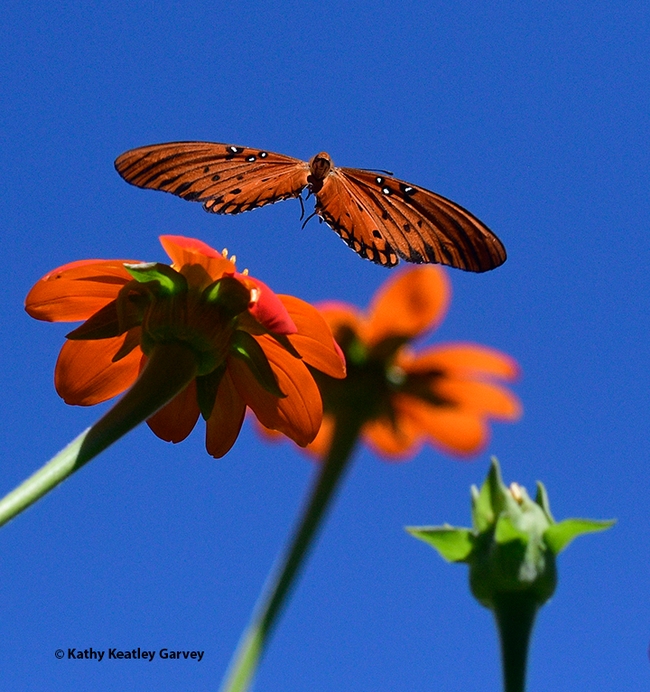- Author: Kathy Keatley Garvey
The Gulf Fritillary, Agraulis vanillae, and the Mexican sunflower, Tithonia rotundifola, seem made for one another.
Both are a showy orange. Both are show-stoppers. And both attract a photographer's eye.
Especially when a Gulf Frit flutters over a Tithonia on a warm sunny day in a Vacaville garden.
A shutter speed of 1/5000 of a second (Nikon D500 with a 200mm lens) stopped the action.
"This dazzling bit of the New World Tropics was introduced into southern California in the 19th Century--we don't know how--and was first recorded in the Bay Area before 1908, though it seems to have become established there only in the 1950s," writes butterfly guru Art Shapiro, UC Davis distinguished professor emeritus, on his website, Art's Butterfly World. "It can be quite common in the East and South Bay --particularly in Berkeley-- and has been found breeding spontaneously as far inland as Fairfield where, however, it is not established."
Shapiro, who has monitored butterfly populations in Central California since 1972, continues: "There are scattered records in the Central Valley and even up to Folsom, perhaps resulting from people breeding the species for amusement or to release at social occasions. According to Hal Michael, who grew up in South Sacramento, this species bred there in abundance on garden Passiflora in the early 1960s. It seems to have died out by the early 1970s, however. Intolerant of hard freezes, it still managed to survive the record cold snap of 1990 that largely exterminated the Buckeye regionally!"
"This butterfly has no native host plant in California and is entirely dependent on introduced species of the tropical genus Passiflora (Passion Flower, Passion Vine), including the common Maypop (P. incarnata) and P. X alatocaerulea. However, it will not eat all of the Passiflora in cultivation in California."
"In the Bay Area this species can be seen flying any day of the year, if it is warm and sunny enough."
On this day in Vacaville, it was indeed warm and sunny enough: 100 degrees.



